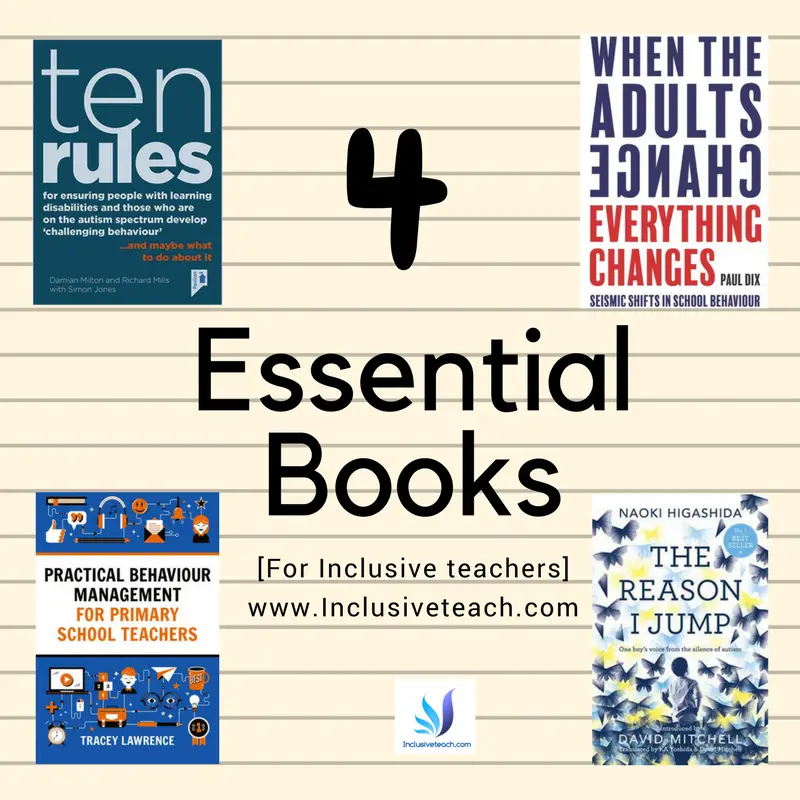Creating a Calm, Low Arousal Environment for SEN Pupils
Understanding Low Arousal Environments
Before we dive into the specifics, it’s important to define what we mean by a “low arousal environment.” At its core, such an environment minimises sensory, cognitive, and emotional overstimulation. This can be achieved through a variety of methods, including controlling physical elements like light and sound, managing classroom activities, and implementing specific teaching strategies.
For SEN pupils who may be more sensitive to sensory input, or more prone to anxiety or stress, a low arousal environment can significantly enhance concentration, engagement, and overall learning outcomes.
Special Educational Needs (SEN) and the Role of a Low Arousal Environment
A low arousal environment can be very effective in allowing pupils to learn and thrive in school. This article is dedicated to supporting teachers in creating a calm, low arousal classroom environment for students with Special Educational Needs (SEN). Our objective is to provide you with practical tools and strategies that can be implemented to ensure that all pupils in your classroom can thrive.
Children with Special Educational Needs (SEN) may face unique challenges in traditional learning environments. These students have needs and abilities that differ from their peers, requiring individualised approaches for optimal learning. A low arousal environment can often provide the calm, structured setting that these students need to thrive. In this article, we will explore the different types of SEN, how they can impact a pupil’s learning and behaviour, and why a low arousal environment can prove to be beneficial.
The Science Behind Low Arousal Environments
The concept of low arousal environments is rooted in a physiological concept known as “arousal.” Arousal refers to the physiological and psychological state of being awake or reactive to stimuli. It involves the brain’s reticular activating system, a network of neurons that play a key role in wakefulness and transitioning between different states of consciousness.
When arousal levels are too high, it can lead to feelings of anxiety, restlessness, and overstimulation. This is particularly true for many SEN pupils. For instance, research has shown that children with Autism Spectrum Disorder (ASD) often have atypical sensory reactions, making them more sensitive to environmental stimuli.
In a study published in the Journal of Autism and Developmental Disorders, researchers found that children with ASD who experienced hyperarousal, or excessive reactions to stimuli, had more difficulty with social skills and communication. This illustrates why a low arousal environment can be particularly beneficial for these students.
Understanding Special Educational Needs (SEN)
Definition and Types of SEN
SEN is a term that encompasses a wide range of needs and conditions that can affect a child’s ability to learn. These include:
- Communication and interaction needs, such as Autism Spectrum Disorder (ASD) and speech and language difficulties.
- Cognition and learning needs, such as dyslexia, dyscalculia, and moderate to severe learning difficulties.
- Social, emotional, and mental health difficulties, such as Attention Deficit Hyperactivity Disorder (ADHD) and emotional disorders.
- Sensory and/or physical needs, such as visual or hearing impairments, or physical disabilities that affect mobility.
Impact of SEN on Learning and Behaviour
The impact of SEN on a child’s learning and behaviour can vary widely based on the type and severity of their needs. For example, an autistic child may struggle with sensory processing and communication, which can lead to feelings of isolation and potentially behavioural issues. A child with dyslexia may have difficulty reading and writing, which can affect their academic performance and self-esteem.
The Role of a Low Arousal Environment
A low arousal environment is one that minimises sensory stimulation through careful control of factors such as noise, light, and visual complexity. This kind of environment can have several benefits for students with SEN, including:
- Reduced Anxiety and Stress: For children with SEN, traditional classrooms can be overwhelming, leading to heightened anxiety and stress. A low arousal environment reduces unnecessary stimuli, helping to create a calm and peaceful setting. This can help students feel more at ease, reducing stress-related behaviours.
- Improved Focus and Concentration: Excessive noise or visual clutter can be particularly distracting for children with attention-related SEN, such as ADHD. By minimising these distractions, a low arousal environment can help improve focus and concentration, leading to better academic outcomes.
- Enhanced Comfort and Security: For students with sensory sensitivities, such as those on the autism spectrum, certain sensory experiences can be uncomfortable or even painful. A low arousal environment, with its controlled sensory input, can create a more comfortable space for these students to learn.Practical Strategies for Creating a Low Arousal Environment
Creating a low arousal classroom involves considerations around physical space, teaching methods, and classroom management strategies. These could include:
- Physical Space: Arrange the classroom to minimize clutter and distractions. Use calming colours and visuals, and control lighting and noise levels.
- Teaching Methods: Incorporate multi-sensory teaching methods that cater to different learning styles and needs. This can also help keep students engaged and focused.
- Classroom Management: Maintain structured schedules and routines to provide predictability, which can be reassuring for students with SEN.
7 Ways to Make Your Classroom a Low Arousal Environment
- Minimise sensory stimulation. Many autistic students are sensitive to sensory overload. Reduce unnecessary sounds, sights, and smells in the classroom. For example, avoid strongly scented perfumes or air fresheners, turn off unused electronics, and minimise clutter and decorations on the walls. Provide a quiet, space for students to go if they feel overwhelmed.
- Maintain a predictable and structured schedule. Post schedules, calendars, and agendas that show what activities will happen and in what order. Stick to regular and predictable routines as much as possible. Warn students ahead of time if there are any changes to the schedule or routine. The predictability will help the students feel more at ease.
- Provide clear and concrete instructions. Give one instruction at a time and make sure students comprehend before moving on. Explain tasks and activities in a very literal, concrete manner. Avoid ambiguous language. Write instructions down in a clear sequence. Check for understanding to avoid confusion.
- Offer opportunities for movement and exercise. Provide regular stretches, movement breaks, and opportunities for exercise. Movement can help relieve stress and restlessness and has a calming effect. Even light activities like walking around the room can help. Build structured movement breaks into the schedule and routine.
- Give advance warning of transitions. Announce any upcoming transitions well in advance of the actual transition time. Explain what is going to happen in a concrete step-by-step manner. This helps students anticipate and prepare for changes and prevents feelings of anxiety. Use timers and schedules to provide visual cues about when transitions will happen.
- Provide a supportive learning environment. Express warmth, empathy, and respect towards all students. Pay close individual attention to students. Offer help and encouragement and praise students for their efforts and achievements. Foster an environment where students feel safe, supported, and set up for success. Build positive relationships based on understanding and trust.
- Promote inclusion. Create opportunities for autistic students to socialise and interact with other students – not forced but to share interests etc. Set the expectation that students will be inclusive, kind, and respectful towards peers with different needs. Monitor interactions and facilitate positive engagement.
How Low Arousal Environments Benefit SEN Pupils
Low arousal environments can help SEN pupils manage their unique challenges in several ways.
- Improved Concentration: By reducing sensory distractions, students can better focus on the task at hand. For example, a child with ADHD may find it easier to concentrate in a room with minimal visual distractions and a consistent routine.
- Reduced Anxiety: SEN pupils who are prone to anxiety or stress may find a low arousal environment calming. This can be particularly beneficial for students with conditions like ASD or anxiety disorders.
- Better Emotional Regulation: A calm and predictable environment can help students learn to regulate their own emotions. This can be particularly beneficial for students with emotional and behavioural difficulties.
Let’s now look at a couple of real-life examples taken from my career (names changed) to understand the impact of a low arousal environment.
Story 1: A Calming Influence for Matthew
Matthew, a 10-year-old Autistic boy, was often overwhelmed in his bustling, brightly lit classroom. He found it hard to focus on his work and would frequently become upset. We decided to transform a corner of the classroom into a low arousal area, with dimmed lighting (covering the flourescent classroom lights), quiet background music, and minimal visual distractions.
Matthew could retreat to this area whenever he felt overwhelmed. The result was remarkable. Matthew was able to calm himself in this environment, and his concentration and behaviour improved significantly.
Story 2: A New Focus for Mia
Mia, a 12-year-old with ADHD, struggled to stay focused in class. Her classroom was vibrant and stimulating, with lots of colourful displays and ongoing activities. While this environment invigorated some students, it was a constant source of distraction for Mia.
Her teachers implemented a low arousal approach, providing Mia with a quieter, more minimalist workspace and clear, structured tasks. This change made a significant difference. Mia became more focused, her work quality improved, and she seemed more relaxed and content in school..
Practical Strategies for Creating a Low Arousal Classroom
A low arousal classroom is not just about calm scandi-decor, hessian display boards and minimalist furniture arrangement – it’s a comprehensive approach that involves multiple elements, including physical space, teaching methods, and classroom management strategies. In this chapter, we delve into practical strategies for creating a low arousal environment conducive to learning and growth, backed by research and illustrated with real-life stories.
Classroom Layout and Decoration
The layout of a classroom can have a significant impact on students’ behaviour and learning.
An ideal layout optimises the use of space, minimises distractions, and promotes calm and focus. Consider dividing the classroom into distinct areas for different activities—quiet corners for independent work, a circle of chairs for group discussions, and a clear space at the front for presentations or demonstrations.
In terms of decoration, keep wall displays educational and minimalist. Overcrowded walls can be visually distracting. One teacher,I worked with, shared her experience of transforming her classroom by reducing the number of posters on the walls. She noticed an immediate change in her students—they were less distracted and more focused on their work. This may not always be the case but is worth trying.
Lighting and Managing Noise Levels
Research has shown that both lighting and noise levels significantly affect students’ academic performance. Natural light is ideal for learning environments, promoting alertness and mood regulation. If natural light is not available, opt for soft, warm lighting over harsh fluorescent lights.
Noise control is another crucial element. Excessive noise can increase stress levels and hinder concentration. Consider implementing quiet hours, using noise-cancelling headphones, or incorporating sound-absorbing materials into your classroom, like rugs or cork bulletin boards.
Use of Calming Colours and Visuals
Colours can evoke emotional responses and influence mood and behaviour. A study from the RAND corporation found that classrooms painted in cool, muted colours, like blue and green, promoted relaxation and focus in students.
When choosing visuals such as posters rather than schedules, opt for nature scenes or abstract shapes rather than busy or chaotic images. Mr. Singh, a veteran educator, found that replacing his vibrant, action-packed posters with calming landscapes resulted in a noticeable decrease in disruptive behaviours.
Multi-Sensory Teaching Methods
Multi-sensory teaching methods can help engage students and cater to different learning styles. They can also promote self-regulation, particularly for students with sensory processing challenges.
In multi-sensory teaching, lessons engage two or more senses simultaneously. For instance, a science lesson might involve students touching and smelling different types of soil (touch and smell), then writing about their observations (sight, touch).
One teacher, Ms. Thompson, incorporated multi-sensory teaching into her classroom and found that not only were her students more engaged, but they also retained information more effectively.

Conclusion
Creating a calm, low arousal classroom can make a significant difference in the educational journey of SEN pupils. It requires a thoughtful approach to classroom setup, teaching methods, and behaviour management, but the rewards – seeing your SEN pupils thrive and reach their potential – are immeasurable.
Throughout this article, we’ve aimed to provide practical strategies that can be adapted to fit your unique classroom and students. Remember, every child is unique, and what works best will depend on the individual child, their specific needs, and the dynamics of your classroom. Stand ready to learn, adapt, and grow along with your students, and you’ll create an environment where all learners can succeed.







3 Comments